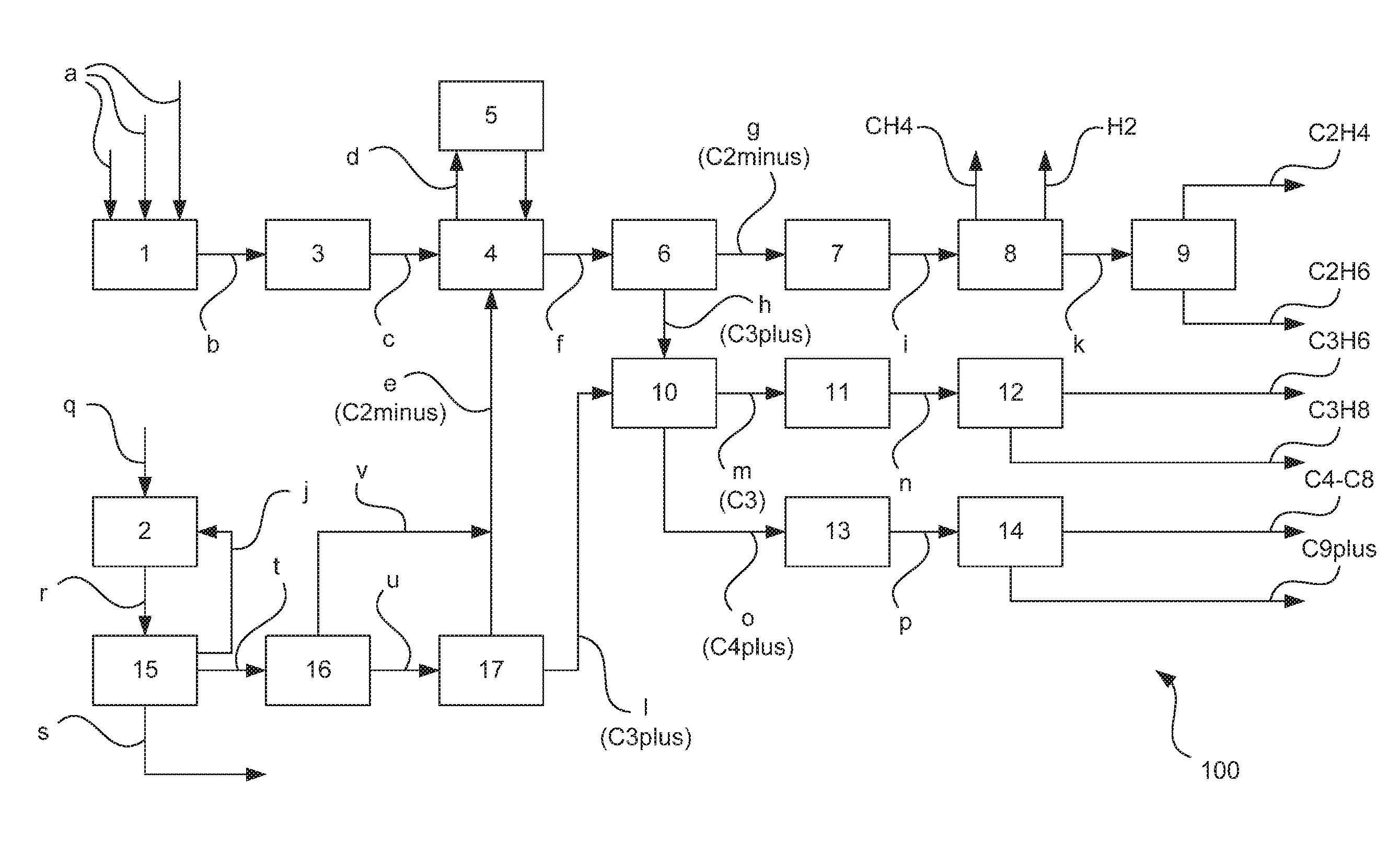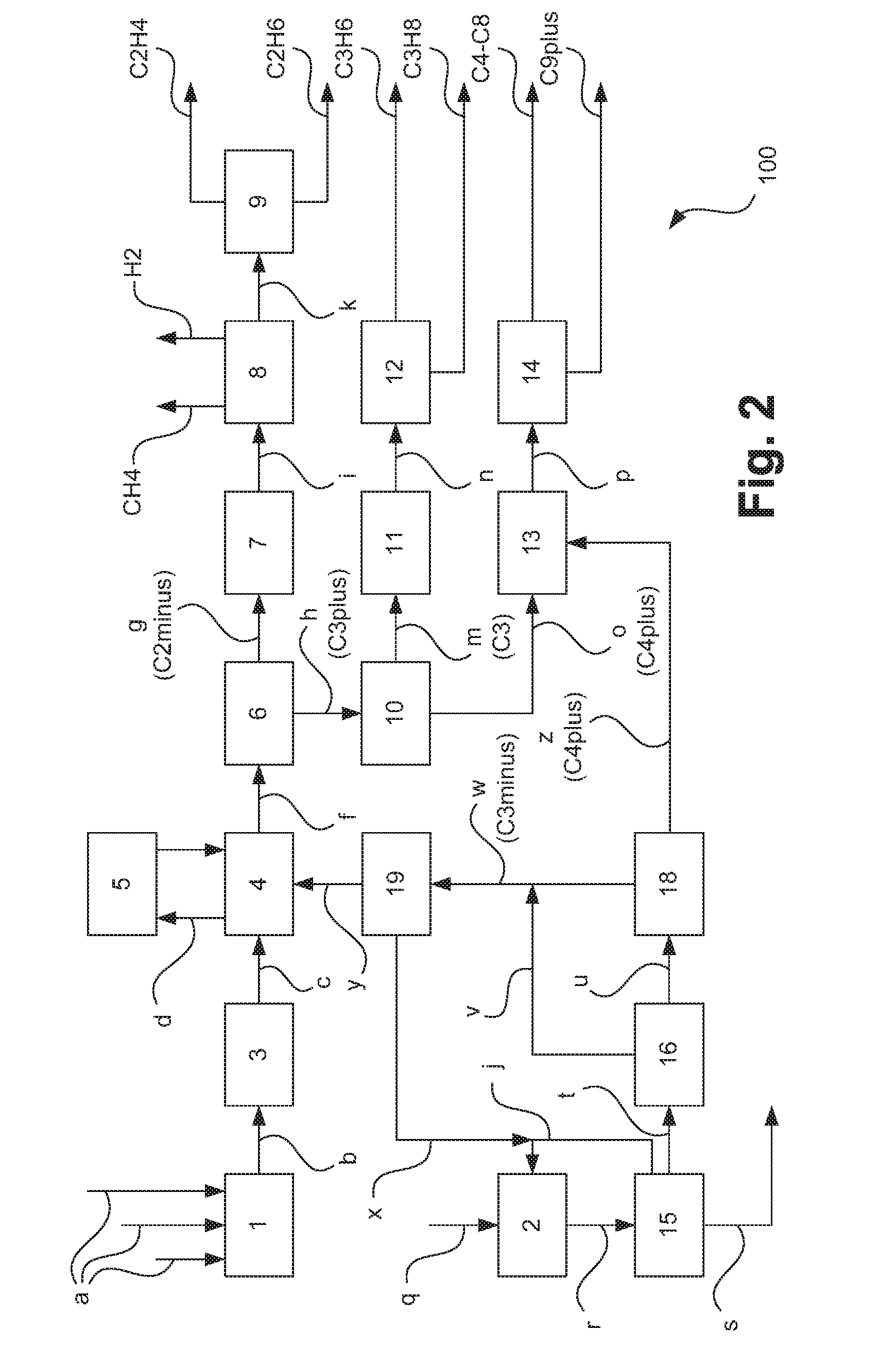Olefin Production Process
a technology of olefin and production process, which is applied in the direction of separation process, hydrocarbon oil treatment product, thermal non-catalytic cracking, etc., can solve the problem that separation in a common separation unit does not always prove satisfactory
- Summary
- Abstract
- Description
- Claims
- Application Information
AI Technical Summary
Benefits of technology
Problems solved by technology
Method used
Image
Examples
Embodiment Construction
[0059]FIG. 1 schematically shows a method according to one embodiment of the invention in the form of a flow chart. The method as a whole is designated 100.
[0060]The method 100 comprises carrying out a steam cracking process 1 and an oxygenate-to-olefin process 2 in parallel. An apparatus in which the method 100 is implemented comprises corresponding means, i.e. at least one cracking furnace and at least one oxygenate-to-olefin reactor.
[0061]The steam cracking process 1 operates using one or more feed streams a which can be supplied to one or more cracking furnaces operated under the same or different cracking conditions, as explained hereinbefore. The streams a may comprise fresh feedstocks or any desired recycle streams from a corresponding method 100. Recycle streams may be, for example, ethane or propane streams and / or streams of hydrocarbons with four to eight carbon atoms (olefinic and paraffinic). Fresh feedstocks may, for example, be supplied in gaseous and / or liquid form, f...
PUM
| Property | Measurement | Unit |
|---|---|---|
| pressure | aaaaa | aaaaa |
| pressure | aaaaa | aaaaa |
| octane number | aaaaa | aaaaa |
Abstract
Description
Claims
Application Information
 Login to View More
Login to View More - R&D
- Intellectual Property
- Life Sciences
- Materials
- Tech Scout
- Unparalleled Data Quality
- Higher Quality Content
- 60% Fewer Hallucinations
Browse by: Latest US Patents, China's latest patents, Technical Efficacy Thesaurus, Application Domain, Technology Topic, Popular Technical Reports.
© 2025 PatSnap. All rights reserved.Legal|Privacy policy|Modern Slavery Act Transparency Statement|Sitemap|About US| Contact US: help@patsnap.com



